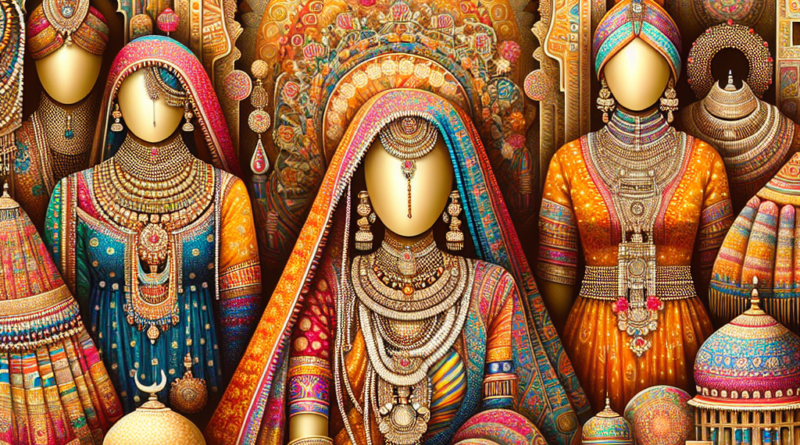Rich and Royal: The Rajput Legacy
Title: Rajput Culture: A Reflection of Hindu and Indian Heritage
Introduction:
Rajputs, a warrior community hailing from the Indian subcontinent, have played a significant role in shaping the cultural landscape of India. Their culture, deeply rooted in Hindu traditions and values, reflects a rich tapestry of customs, rituals, art forms, and beliefs that have endured through centuries. In this article, we delve into the historical context and contemporary relevance of Rajput culture, exploring its profound connection to Hindu and Indian heritage.
Historical Context:
The history of the Rajputs dates back to ancient times, with their origins traced to the warrior clans and tribes that inhabited the northwestern regions of India. The Rajputs rose to prominence during the medieval period, particularly in the regions of Rajasthan, Gujarat, and parts of present-day Uttar Pradesh and Madhya Pradesh. Known for their valor, chivalry, and martial prowess, the Rajputs established powerful kingdoms and played a crucial role in defending India against foreign invasions.
The Rajput Legacy
Rajput society was structured along feudal lines, with a strong emphasis on honor, loyalty, and duty. The concept of “Rajputana,” the land of the Rajputs, symbolized a code of conduct that governed every aspect of their lives. The Rajputs were staunch defenders of Hindu dharma, and their culture was deeply intertwined with Hindu religious practices and beliefs. They revered their lineage, valorized their ancestors, and upheld the ideals of sacrifice and righteousness.
Rajput Culture and Hindu Traditions:
Rajput culture is a vibrant tapestry woven with threads of Hindu traditions and customs. From elaborate marriage rituals to colorful festivals, Rajput customs are imbued with spiritual significance and symbolism. The Rajputs are known for their reverence for the Hindu pantheon of gods and goddesses, with many Rajput clans tracing their lineage to mythical figures and divine beings.
The practice of “jauhar” and “saka” among Rajput women during times of war exemplifies their deep-rooted commitment to honor and sacrifice. Jauhar, the act of self-immolation to avoid capture and dishonor, and saka, the fighting to the death against invaders, are seen as acts of courage and devotion to duty in Rajput culture. These traditions highlight the importance of upholding one’s honor and principles even in the face of adversity.
Rajput art and architecture also reflect their Hindu heritage, with majestic forts, palaces, and temples showcasing intricate carvings, vibrant paintings, and exquisite craftsmanship. The Rajput courts patronized poets, musicians, and artists, fostering a rich cultural milieu that celebrated creativity and beauty. The Rajput miniature paintings, known for their detailed depictions of courtly life, mythology, and nature, are a testament to their artistic legacy.
Contemporary Relevance:
In contemporary India, Rajput culture continues to resonate with pride and reverence among communities that trace their lineage to the warrior clans of yore. The valor and spirit of the Rajputs are celebrated in folklore, literature, and popular culture, with tales of their heroism inspiring generations of Indians. Rajput festivals like Holi, Diwali, and Teej are marked with traditional fervor, uniting families and communities in joyous celebrations.
The traditional attire of Rajputs, including the colorful turbans, embroidered garments, and jewelry, has transcended time and become a symbol of cultural identity and heritage. Rajput martial traditions, such as the practice of horse-riding, archery, and swordsmanship, are preserved and promoted through events like equestrian shows and martial arts demonstrations.
Moreover, Rajput cuisine, known for its rich flavors and royal heritage, has found a place in the culinary landscape of India, with dishes like dal-baati-churma, laal maas, and gatte ki sabzi being savored by food enthusiasts across the country.
In conclusion, Rajput culture stands as a testament to the enduring legacy of Hindu and Indian traditions. Its rich tapestry of customs, rituals, art forms, and beliefs continues to inspire and captivate people, serving as a bridge between the past and the present. By preserving and promoting Rajput heritage, we honor the valor and spirit of a community that has left an indelible mark on the cultural mosaic of India.

